Het snelle tempo van de technologische vooruitgang heeft geleid tot opwindende tech-trends die hele bedrijfstakken kunnen revolutioneren. En als we van de afgelopen jaren iets hebben geleerd, dan is het wel dat ondernemingen die niet meeschakelen met deze ontwikkelingen moeite zullen hebben om te overleven. Het is belangrijk om zoveel mogelijk informatie te verzamelen over de technologie die de digitale transformatie van jouw onderneming het meest efficiënt versnelt. Daarvoor moet je met name die technologieën analyseren die jou het grootste concurrentievoordeel kunnen bieden.
Wij hebben 25 van de meest disruptieve trends voor 2019 onderzocht en voor je op een rij gezet.
Trend 1: Het immense potentieel van Blockchain wordt steeds duidelijker
Hoewel het voornamelijk bekend staat als de technologie achter cryptovaluta’s, is het potentieel van Blockchain eigenlijk vele malen groter. Blockchain is in essentie een gedecentraliseerd grootboek met onveranderbare transacties. Daarin worden gegevens – verspreid over duizenden computers – opgeslagen zonder dat er third-party validation aan te pas komt. Allerlei sectoren, zoals de financiële industrie, de vastgoedsector, de gezondheidszorg en de detailhandel, kunnen van Blockchain profiteren. Je kunt het bijvoorbeeld gebruiken om een goedkoper betalingssysteem voor internationale geldtransfers te creëren. Ook wordt in India al geëxperimenteerd met een door een Blockchain aangedreven kadastersysteem, waarin men met gebruik van slimme contracten de verkoop van grond kan vastleggen. De overheid in Dubai is van plan om verschillende openbare diensten op deze gedecentraliseerde grootboektechnologie te laten draaien. Bedrijven kunnen Blockchain ook gebruiken om geld in te zamelen met behulp van een Initial Coin Offering (ICO). Dat is een crypto-versie van een beursgang, waarbij investeerders cryptomunten krijgen in plaats van aandelen. De potentiële toepassingen van Blockchain zijn zoals je ziet eindeloos. Naar verwachting zal de bedrijfswaarde van deze technologie tegen 2030 maar liefst $3,1 triljoen bedragen.

Trend 2: Kunstmatige intelligentie blijft in 2019 grootse dingen doen
We zien steeds meer producten en diensten die door kunstmatige intelligentie (KI) aangedreven worden. Veel voordelen van KI waar wij in het dagelijks leven van profiteren worden mogelijk gemaakt door machine learning (ML), een subset van KI. Met deze tech kun je machines trainen zichzelf voortdurend dingen te leren, patronen in grote hoeveelheden data te ontdekken en daarmee inzichten te genereren en beslissingen te nemen. Allemaal zonder menselijke tussenkomst. ML wordt al in vele sectoren toegepast en naar verwachting stijgt de waarde van deze markt in 2022 naar $8,81 miljard. De toepassingen van ML zijn zeer uiteenlopend en omvangrijk. De zelfrijdende Google auto en de online aanbevelingssystemen van Amazon en Netflix zijn mooie voorbeelden van wat er met machine learning mogelijk is. Kunstmatige intelligentieplatforms zullen naar verwachting ook een grote impact hebben op big data-analyse. Deze kunnen gegevens namelijk op zeer efficiënte manier verwerken en waardevolle business intelligence genereren.
Trend 3: Virtual reality – zoveel meer dan alleen gaming technologie
Virtual reality (VR) technologie heeft de laatste jaren een enorme ontwikkeling doorgemaakt. De tech is in feite van de gaming-industrie naar andere sectoren verschoven, waar het vele uiteenlopende toepassingen heeft gevonden. Er zijn eigenlijk maar weinig situaties waar VR geen waarde kan toevoegen. Zo hebben bedrijven als Osso VR en ImmersiveTouch simulaties ontwikkeld waarmee chirurgen met VR headsets chirurgische ingrepen kunnen oefenen. Door VR met haptische feedbacktechnologie te combineren, kunnen artsen zelfs de weerstand van weefsel voelen, waardoor steeds effectievere trainingsmethoden mogelijk worden. VR is ook populair onder wetenschappers. Moleculair exploratiebedrijf Nanome heeft bijvoorbeeld een programma ontwikkeld waarmee gebruikers moleculaire structuren kunnen ontwerpen en manipuleren. En voor degenen die geïnteresseerd zijn in het verkennen van het universum, ontwikkelt SpaceVR “de eerste virtual reality-camerasatelliet ter wereld” waarmee mensen de uitgestrektheid van de ruimte kunnen ervaren. Een van de belangrijkste redenen waarom VR nog steeds niet mainstream is geworden zijn de kosten van de headsets, ondanks inspanningen van bedrijven als Facebook en HTC om goedkopere modellen te ontwikkelen. Toch is VR veelbelovende technologie met een immens potentieel, waarvan we ons de reikwijdte nu nog niet kunnen voorstellen.
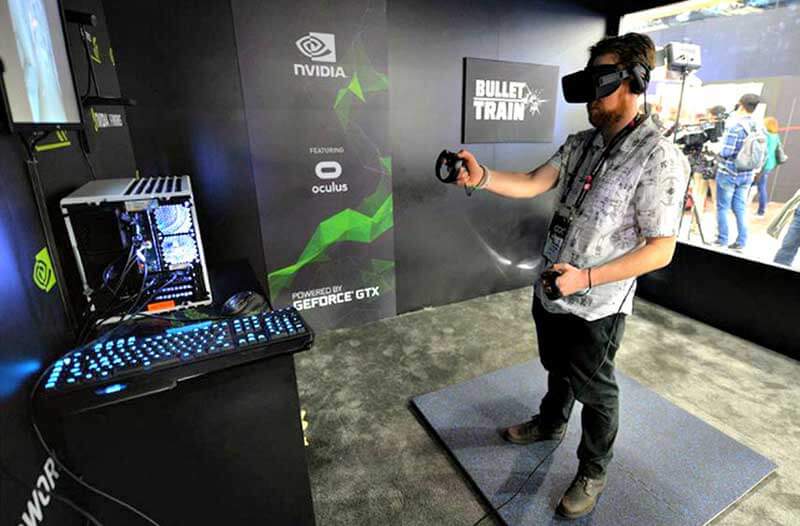
Trend 4: Op de slimme werkplek van de toekomst is alles en iedereen met elkaar verbonden
Onze werkplekken worden steeds slimmere ruimtes waar alles en iedereen met elkaar verbonden is. Deze ontwikkeling heeft verschillende redenen, zoals het feit dat steeds meer mensen in efficiënte en milieuvriendelijke kantoren willen werken. Een voorbeeld van hoe technologie de werkplek efficiënter kan maken is Honeywell’s Vector Space Sense. Met deze software kun je zien waar, wanneer en hoe ruimten in een gebouw op een bepaald moment worden gebruikt, zodat je een ruimte beter kunt managen en het gebruik ervan kunt optimaliseren. Siemens ontwikkelt een Smart Space-oplossing die de werkplek op een aantal manieren moet verbeteren. Algoritmes berekenen bijvoorbeeld welke ruimte de ideale grootte heeft voor een bepaalde meeting. Bovendien informeren ze de deelnemers hoe ze er moeten komen. De algoritmes zorgen bovendien dat de verlichting en de temperatuur zich automatisch aanpassen aan de voorkeur van de gebruiker(s). Deze en vele andere voordelen zullen naar verwachting leiden tot aanzienlijke energiebesparingen en productievere werknemers.

Trend 5: Edge computing: een oplossing voor het verwerken van de groeiende hoeveelheden data
Wanneer gegevens van Internet of Things (IoT)-apparaten over lange afstanden naar clouds of andere datacentra worden verzonden, treedt vaak latentie op. Met edge computing kun je dataverkeer van IoT-apparaten stroomlijnen en dichterbij de bron verwerken. Dit gebeurt door middel van een netwerk van microdatacenters in plaats van clouds. Deze zijn namelijk vaak niet meer voldoende om de gegevens die we genereren direct te verwerken. Als je bedenkt dat er tegen 2025 wereldwijd meer dan 75 miljard IoT-apparaten in gebruik zijn en we met z’n allen steeds meer data genereren, begrijp je waarom edge computing steeds belangrijker wordt. Dit was voor Intel en Alibaba aanleiding om een Joint Edge Computing Platform te lanceren dat de software, hardware en KI-technologieën van Intel met Alibaba Cloud IoT-producten integreert. De verwachting dat de waarde van de edge computingmarkt in 2022 maar liefst $6,72 miljard bereikt, geeft aan dat we in de toekomst veel meer met deze technologie te maken krijgen.
Trend 6: Cyberaanvallen richten zich op nieuwe slimme apparaten
Cyberbeveiliging is voortdurend in ontwikkeling om de steeds veranderende aard van cyberdreigingen tegen te gaan. De laatste trends op dit gebied hebben betrekking op de bescherming van IoT-apparaten, waarbij standaardbeveiliging als firewalls of inbraakdetectiesystemen (IDS) niet langer afdoende zijn. Netwerkgedragsanalyse op basis van deep learning-technologie wordt nu gezien als een mogelijke oplossing, omdat deze tech verdachte activiteiten sneller kan detecteren en beter kan voorkomen. Een andere optie is het introduceren van virtuele privénetwerken die het IP-adres van de gebruiker verbergen. Ook worden hardware-authenticatieprotocollen en technologieën ter voorkoming van gegevensverlies steeds populairder. Tot slot betekent de groeiende populariteit van de cloud dat ook deze sector geavanceerdere cyberbeveiligingssystemen moet implementeren. Dit kan bijvoorbeeld door middel van gevirtualiseerde firewalls en -inbraakdetectie. Over het geheel genomen is de verwachting dat het aantal cyberaanvallen in 2019 zal blijven toenemen. Het is dan ook belangrijk dat zowel bedrijven als individuen hun beveiligingsmaatregelen flink aanscherpen.

Trend 7: Digitale ethiek, machines en moraal – het debat duurt voort
Er wordt steeds vaker aandacht besteed aan morele dilemma’s met betrekking tot kunstmatige intelligentie (KI) en robotica. Een voorbeeld is het bekende ‘trolleyprobleem’ – door een aanstormende trein zullen vijf spoorrailwerkers om het leven komen, maar jij kunt hen redden door de wissel om te zetten, waarbij vervolgens ‘maar’ één man om het leven komt. Wat doe je? Dit wordt in de toekomst ook bij autonome voertuigen en andere machines een steeds relevanter vraagstuk. Want hoe beslist een zelfrijdende auto over leven en dood? En wie is verantwoordelijk voor de handelingen van kunstmatig intelligente apparaten? Ook op macroniveau zullen we het debat over privacy- en gegevensbescherming blijven voeren. David Cearley, vice-president van onderzoeksbureau Gartner, zegt dat bedrijven verder moeten gaan dan vragen stellen als “zijn we compliant?” en “doen we de juiste dingen?” De Europese Commissie pleit voor een wettelijk en ethisch kader voor het gebruik van KI. Naarmate digitale technologieën ons leven steeds verder infiltreren, zal ook het aantal discussies over digitale ethiek blijven toenemen.

Trend 8: De race om ’s werelds eerste kwantumcomputer op de markt te brengen gaat onverminderd door
In de loop der jaren zijn computers veranderd van trage, grote boxen in supersnelle, piepkleine apparaten. Maar ook al zijn de huidige computers krachtiger dan hun voorgangers, als het gaat om extreem complexe problemen schiet hun rekenkracht steeds vaker tekort. Dit heeft researchers en bedrijven doen besluiten om het potentieel van kwantumcomputing te onderzoeken. In tegenstelling tot klassieke computers die gebruik maken van bits om informatie te verwerken (met de cijfers 0 en 1), gebruiken kwantumcomputers qubits. Deze kunnen met een veel hogere snelheid veel meer informatie opslaan en complexere berekeningen uitvoeren. Hoewel deze technologie nog in de kinderschoenen staat, gelooft IBM dat we er in de nabije toekomst veel meer mee te maken krijgen. Eerder dit jaar introduceerde IBM zelfs een kwantumcomputer die uit 50 qubits bestaat. Daarop volgde Google met het 72-qubits kwantumcomputersysteem Bristlecone. Voorlopig zijn deze supersnelle computers overigens alleen nog geschikt voor laboratoriumwerk en onderzoek. Voor grootschalig, ‘mainstream’ gebruik moet er nog veel meer werk verzet worden. Maar de race om ’s werelds eerste kwantumcomputer op de markt te brengen gaat onverminderd door.
Trend 9: De opkomst van fake content
Heb je al gehoord dat de Obama’s gaan scheiden en dat Hillary Clinton financiële banden heeft met IS? In dit tijdperk van nepnieuws steken dit soort gefabriceerde verhalen overal de kop op. Hoewel nepnieuws al zo oud is als de mensheid zelf, hebben exponentiële ontwikkelingen in de moderne technologie ervoor gezorgd dat het steeds makkelijker en sneller gecreëerd en verspreid wordt. Bovendien wordt de technologie die nepcontent mogelijk maakt met de dag krachtiger, waardoor het steeds moeilijker wordt om echt van nep te onderscheiden. Met kunstmatige intelligentie kun je steeds makkelijker realistische content creëren van iemand die iets zegt of doet – wat hij of zij nooit heeft gezegd of gedaan. Dit soort content, ook wel ‘deepfakes‘ genoemd, wordt gemaakt om je in verwarring te brengen, de waarheid te ondermijnen en bedrijven of individuen bijvoorbeeld af te persen. Een recent voorbeeld is actrice Emma Watson. Zij werd het slachtoffer van deepfakes nadat iemand met nepbeelden een pornografische video van haar had gemaakt. Er zijn helaas nog geen duidelijke oplossingen voor dit probleem. Maar machine learning zó ontwikkelen dat het nepcontent kan herkennen is zeker een stap in de goede richting.

Trend 10: Bedrijven doen alles om consumentengegevens in handen te krijgen en onze privacy staat steeds meer op het spel
Privacygerelateerde incidenten en veiligheidsinbreuken hebben ons de afgelopen jaren laten zien dat onze persoonlijke gegevens in een alarmerend tempo worden gelekt, gedeeld en misbruikt. Het schandaal rond Cambridge Analytica, het databedrijf dat – zonder toestemming – de gegevens van miljoenen Facebookgebruikers voor de campagne van Donald Trump had gebruikt, is slechts één van de vele voorbeelden. En social-mediagiganten blijven hun klanten allerlei ‘legale’ manieren bieden om ons online gedrag te analyseren. Verzekeringsmaatschappijen kunnen bijvoorbeeld social media-accounts doorzoeken om bewijzen te vinden voor de verzekeringsclaims van hun klanten. In de toekomst kunnen ze iemand die een video plaatst van roekeloos rijgedrag bijvoorbeeld met een hogere verzekeringspremie om de oren slaan. Zelfs content die je als ouder over je kinderen op social media plaatst kan verzameld en gebruikt worden voor het creëren van gepersonaliseerde advertenties. Onze privacy staat steeds meer op het spel en het ziet er niet naar uit dat dat in 2019 zal veranderen. Regelgeving als GDPR zou de eerste stap kunnen zijn om consumenten de controle over hun gegevens terug te geven, maar we hebben nog een lange weg te gaan.
Trend 11: Augmented reality komt in een stroomversnelling
Augmented reality (AR) is een veelbelovende technologie die al in verschillende bedrijfstakken met succes toegepast wordt. In de gezondheidszorg kunnen AR-tools de resultaten van patiënten verbeteren en medisch personeel efficiënter maken. Zo ontwikkelt het technologiebedrijf Proximie AR-oplossingen om medische training te verbeteren en bracht het California Institute of Technology een AR-app uit om mensen met een visuele beperking te helpen bij het identificeren van objecten. In de militaire sector kan AR-tech soldaten helpen met hun voorbereidingen op militaire missies. Het Amerikaanse leger heeft inmiddels al 100.000 Microsoft HoloLens headsets met nachtzicht gekocht die gegevens genereren over de activiteiten van de soldaat. Ook in musea wordt steeds vaker gebruik gemaakt van AR. Een groep kunstenaars gebruikte onlangs een AR-app waarmee je de schilderijen van Jackson Pollock in het Museum of Modern Arts volledig kunt transformeren. Bezoekers die de schilderijen met de MoMAR Gallery smartphone app scannen kunnen deze op hele bijzondere, interactieve manieren ervaren.
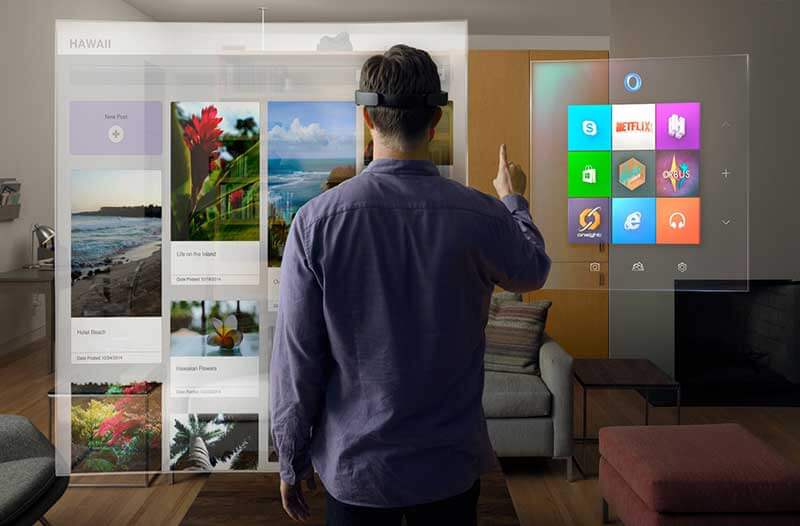
Trend 12: Drones worden in steeds meer sectoren onmisbaar
Dronetechnologie werd oorspronkelijk alleen in het leger gebruikt, maar vindt de laatste jaren ook steeds meer toepassingen in allerlei andere sectoren. Neem bijvoorbeeld het Japanse bouwbedrijf Komatsu. Eerder dit jaar kochten ze 1.000 drones van de bekende dronefabrikant DJI, waarmee ze bouwplaatsen scannen, materialen identificeren en (potentiële) bouwgebieden in kaart brengen. Een andere innovatie in dronetech is bijvoorbeeld het in kaart brengen van landgebruik. DroneDeploy wil dit proces door middel van Live Map, een mobiel hulpmiddel dat real-time dronekaarten genereert, een stuk eenvoudiger maken. Wat drones met name zo aantrekkelijk maakt is dat ze bijvoorbeeld rampgebieden veilig en efficiënt kunnen bereiken. Ze kunnen daar reddingsteams helpen bij het opsporen van slachtoffers en voedsel en medische hulpmiddelen bezorgen.
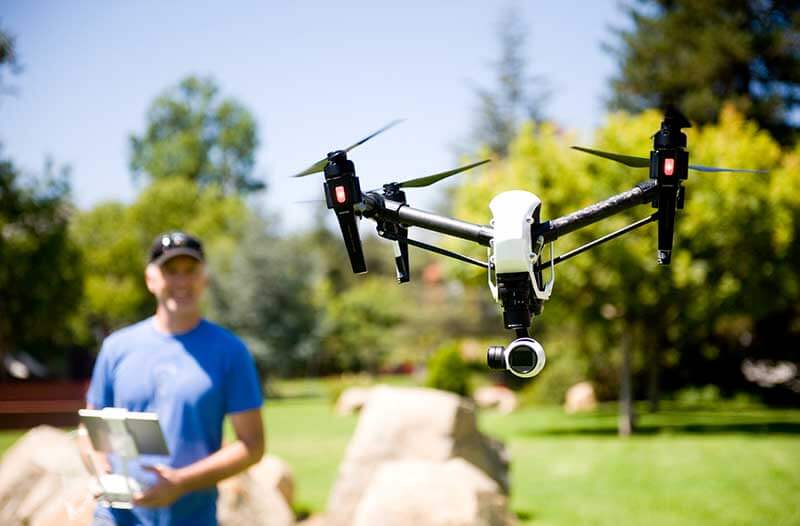
Trend 13: Automatisering van last mile deliveries – nóg snellere levering
Consumenten krijgen steeds meer macht. Ze verwachten snelheid en gemak, vooral als het gaat om de levering van gekochte producten. Om aan deze eisen te voldoen komen bedrijven steeds weer met nieuwe manieren om hun last mile delivery efficiënter en sneller te maken. En er is natuurlijk geen betere manier om dit te doen dan met autonome voertuigen. Autonome voertuigstartup Nuro werkt hard aan het verbeteren van last mile deliveries. Het bedrijf doet dit met de ontwikkeling van zelfrijdende elektrische voertuigen die pakketten, boodschappen en maaltijden bezorgen. Ook Renault heeft onlangs een zelfrijdend voertuig ontwikkeld, de EZ-PRO. Hiermee wil de autofabrikant de verkeersproblematiek in grote steden oplossen en vervuiling terugdringen. Hoewel sommigen geloven dat deze innovaties menselijke chauffeurs overbodig zullen maken, meldt de BBC dat mensen door deze ontwikkelingen in de toekomst juist meer tijd kunnen besteden aan waardevoller werk.
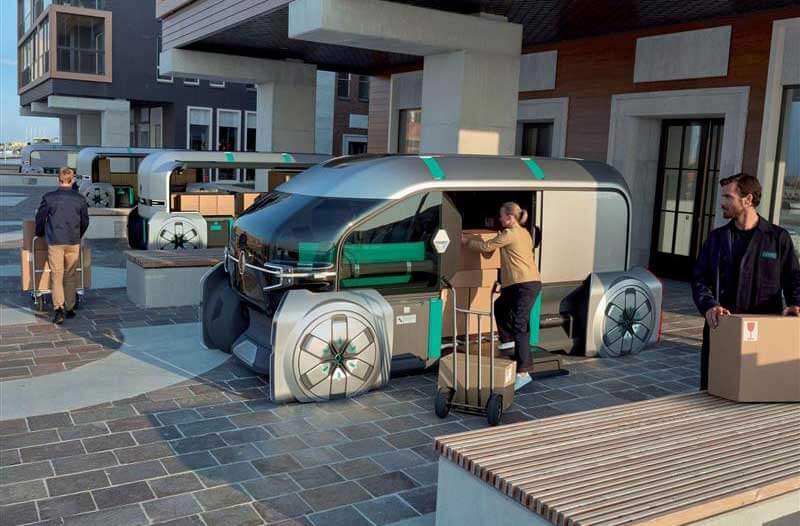
Trend 14: Kan groene technologie helpen onze planeet te redden?
De grootste problemen waar we vandaag mee te maken hebben zijn onder andere vervuiling en klimaatverandering. Helaas wordt deze problematiek met name veroorzaakt door ons eigen roekeloze gedrag. Om onze planeet te helpen en ervoor te zorgen dat we in de toekomst duurzamer kunnen leven, werken veel bedrijven aan innovatieve groene technologieën die koolstofdioxide kunnen verminderen. Het Zwitserse bedrijf Climeworks heeft bijvoorbeeld een systeem ontwikkeld dat koolstofdioxide (CO2) uit de omgevingslucht kan verzamelen. Dit wordt vervolgens gecombineerd met duurzaam geproduceerde waterstof (H2) om methaanbrandstof te maken die nagenoeg geen CO2 aan de atmosfeer toevoegt. De Climeworksfabriek in Italië kan jaarlijks maar liefst 150 ton kooldioxide uit de lucht filteren. Aan de Universiteit van Michigan werkt een groep onderzoekers aan een milieuvriendelijke brandstof die gemaakt is van algen. Behalve dat deze brandstof efficiënter is dan onze huidige fossiele brandstoffen, kan het ook de uitstoot van broeikasgassen met 60 procent verminderen. Indoor-, urban- en verticale landbouw blijven overigens ook aan populariteit winnen. Bij deze nieuwe landbouwtechnieken worden veel minder pesticiden, water en grond gebruikt dan bij traditionele landbouwmethoden. En omdat stedelijke boerderijen voedsel dichterbij de consument verbouwen, is voor deze vorm van groenten- en fruitteelt ook veel minder behoefte aan transport. Hierdoor kan de uitstoot van CO2 nog verder teruggedrongen worden.
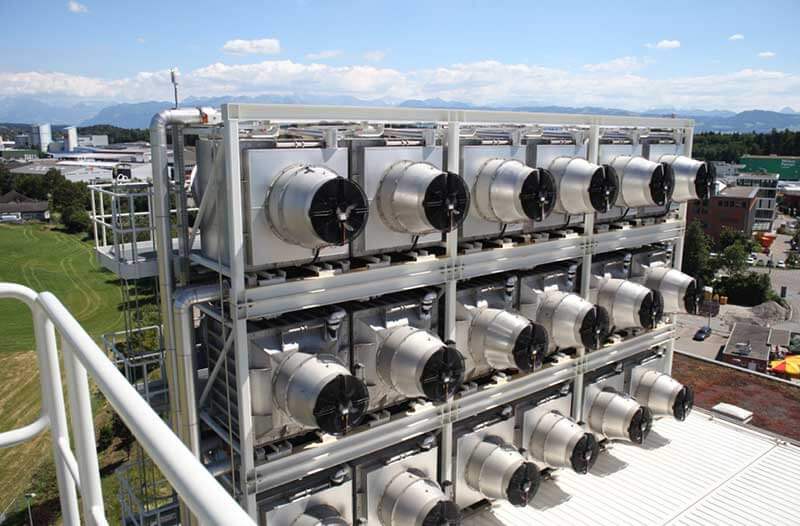
Trend 15: 3D-printtechnologie revolutioneert de maakindustrie
3D-printtechnologie, ook wel additive manufacturing genoemd, bestaat al geruime tijd, maar het enorme potentieel van deze technologie is de laatste jaren pas echt zichtbaar geworden. Nu maken steeds meer bedrijven gebruik van 3D-printers om nieuwe producten te maken. Sportkledinggigant Adidas is bijvoorbeeld van plan om tegen het einde van dit jaar 100.000 paar schoenen met 3D-geprinte tussenzolen te lanceren. De komende jaren wil het bedrijf zelfs miljoenen van deze schoenen gaan produceren. Ook lucht- en ruimtevaartreus Boeing is geïnteresseerd in 3D-printtechnologie. Het bedrijf gebruikt de tech bijvoorbeeld om luchtkanalen en voetsteunen te produceren en tot nu toe zijn er al 60.000 van deze 3D-geprinte componenten in Boeingvliegtuigen geïnstalleerd. Onderzoekers aan de Universiteit van Minnesota experimenteren met 3D-printtechnologie om een zacht en rekbaar materiaal te creëren. Dit materiaal is in verschillende opzichten beter dan het traditionele plastic dat normaal gesproken in 3D printen wordt gebruikt. Omdat het zacht en rekbaar is, kun je er unieke producten van maken met uiteenlopende vormen en mogelijkheden.
Trend 16: De autonome revolutie in de goederentransportsector
Alles om ons heen wordt steeds verder geautomatiseerd en dat is de komende jaren in de transportsector niet anders. Omdat autonome technologie deze bedrijfstak veel efficiënter kan maken, zijn veel bedrijven er bijzonder in geïnteresseerd. Zo is ijzermijnbouwbedrijf Vale van plan om hun traditionele vrachtwagenpark begin 2019 te vervangen door autonome voertuigen. Als alles volgens plan verloopt, komen er op de mijnsite van Vale in Brazilië 13 chauffeurloze vrachtwagens met GPS, radar en kunstmatige intelligentie. Deze nieuwe trucks zullen het brandstofverbruik naar schatting met 10 procent verminderen en de on-site veiligheid aanzienlijk verbeteren. Maar vrachtwagens zijn niet de enige transportmiddelen die autonoom worden. In Noorwegen is bijvoorbeeld ’s werelds eerst autonome scheepvaartmaatschappij, Massterly, gevestigd. Dit bedrijf gaat volgend jaar, met gebruik van het autonome containerschip YARA Birkeland, beginnen met het autonoom verschepen van goederen.
Trend 17: 5G draadloze technologie – nóg sneller, nóg betrouwbaarder, nóg meer mogelijkheden
We worden steeds afhankelijker van draadloze communicatie. En ook al voldoen smartphones en andere draadloze technologieën redelijk aan onze behoeften en verwachtingen, is nóg sneller en nóg betrouwbaarder natuurlijk beter. Dat kan met de vijfde generatie draadloze technologie, ook wel 5G genoemd, gerealiseerd worden. 5G-technologie biedt enorm veel voordelen. In combinatie met sensortechnologie kan het bijvoorbeeld zorgen voor efficiënte communicatie tussen autonome voertuigen, waardoor ongelukken vaker voorkomen kunnen worden. En in geval van ernstige verkeersproblemen kunnen overheden 5G gebruiken om alternatieve routes te adviseren. 5G kan ook de manier waarop we onze mobiele telefoons gebruiken vele malen verbeteren. Zo maakt deze tech bijvoorbeeld hologramtelefoongesprekken en live interactieve uitzendingen mogelijk. Het Britse telecommunicatiebedrijf Vodafone liet onlangs zien hoe zo’n hologramtelefoongesprek met 5G in z’n werk gaat.
Trend 18: Steeds meer landen introduceren cryptovaluta als wettig betaalmiddel
Sinds de introductie van Bitcoin bijna tien jaar geleden, hebben cryptovaluta behoorlijk wat vooruitgang geboekt. Ook overheden zijn vastbesloten om deze technologie in gebruik te gaan nemen. Hoewel Rusland in eerste instantie niet zo enthousiast was over cryptovaluta, is het land duidelijk van gedachten veranderd. De Russische regering heeft namelijk bekendgemaakt dat het een eigen virtuele staatsmunt – de CryptoRoebel – wil introduceren. Met deze staatsmunt wil Rusland de bitcoin de wind uit de zeilen nemen en stuurt het aan op een landelijk verbod in bitcoinhandel. Ook de Marshalleilanden zijn bezig met een eigen cryptomunt, de Sovereign of SOV. Het parlement van de Marshalleilanden aanvaardde in maart een wetsvoorstel om deze nationale cryptocurrency in te voeren. De SOV wordt uitgegeven in samenwerking met het Israëlische technologiebedrijf Neema en fungeert als een traditionele munt die naast de Amerikaanse dollar wordt gebruikt. Dit maakt de Marshalleilanden het eerste onafhankelijke land met een cryptomunt als wettig betaalmiddel. Estland, Iran en China overwegen ook hun eigen cryptovaluta te introduceren.

Trend 19: Basisinkomen als oplossing voor de gevolgen van de automatisering
Zelfscankassa’s die kassières overbodig maken, robots die fabrieksarbeiders vervangen en zelfrijdende trucks die chauffeurs op straat zetten – dat is volgens velen de toekomst waar we naartoe gaan. De technologische revolutie leidt niet alleen tot efficiëntere bedrijven en nieuwe producten, maar resulteert ook in werklozen die dringend behoefte hebben aan een soort sociaal vangnet. Een manier om deze uitdagingen aan te pakken is het invoeren van een universeel basisinkomen – een regelmatig, door de staat uitbetaald geldbedrag, waarmee burgers in hun basisbehoeften kunnen voorzien. Ondernemers als Richard Branson en Elon Musk zijn enthousiaste voorstanders en de regeringen van Canada, Finland en verschillende andere landen hebben al pilots gedraaid om een beter inzicht te krijgen in de voor- en nadelen. Italië heeft onlangs een basisinkomen voor de armen ingevoerd en steeds meer regeringen over de hele wereld experimenteren met deze aanpak om oplossingen te vinden voor de gevolgen van automatisering.

Trend 20: Zal het IoT volledig slimme steden eindelijk mogelijk maken?
Het Internet of Things (IoT) zal in 2019 jaar zijn indrukwekkende groei voortzetten, en naar verwachting bereikt de IoT-markt in 2022 een waarde van maar liefst $561,04 miljard. Dit betekent dat het huidige aantal van 3,6 miljard IoT-apparaten zal groeien, wat zal bijdragen aan een verdere penetratie van de IoT-markt. In sectoren als de productie-industrie en de gezondheidszorg zullen we een bijzonder sterke groei waarnemen. Het aantal verbonden apparaten in de productiesector zal tussen nu en 2020 bijvoorbeeld verdubbelen. Het IoT heeft zijn belofte om volledig slimme steden te creëren echter nog niet waargemaakt. Maar projecten als Sidewalk Labs in Toronto laten zien dat we op z’n minst een aantal slimme wijken kunnen verwachten. Onze auto’s worden ook in toenemende mate uitgerust met IoT-systemen die bijvoorbeeld het olieniveau, brandstofverbruik en de bandenspanning in de gaten houden. We kunnen er eigenlijk wel vanuit gaan dat binnenkort elk denkbaar apparaat met het internet verbonden is. En om ervoor te zorgen dat we onszelf beschermen tegen cyberaanvallen, zullen we deze apparaten ook van robuuste cyberbeveiliging moeten voorzien.
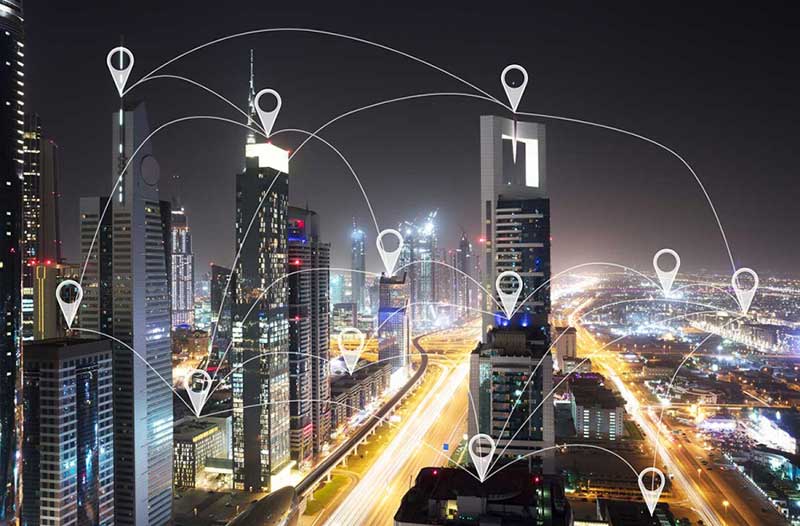
Trend 21: KI- en 3D-beeldvorming geven de verkoop van e-commercebedrijven een boost
In een online markt waar de concurrentie steeds moordender wordt, moeten e-commerce bedrijven in toenemende mate gebruik maken van technologie om indruk te maken op hun klanten. Een van de technologieën die we in de toekomst in e-commerce vaker zullen zien is 3D-productbeeldvorming. Deze technologie stelt klanten in staat om op een product in te zoomen, het item te draaien en vanuit verschillende hoeken te bekijken. E-commercebedrijven die deze tech hebben geïmplementeerd, zoals TSUM, melden een stijging van 40 procent in hun conversie. Online fashion-retailers als Yoox hebben KI-tools ontwikkeld die social mediacontent, feedback van klanten, online magazines en eigen verkoopgegevens analyseren. Met deze informatie kunnen ze hun klanten bepaalde kleding adviseren. De Indiase e-commerce site Myntra pakt het op een soortgelijke manier aan. Volgens Ananth Narayananan, de CEO van het bedrijf, is de verkoop van shirts met KI-gegenereerde ontwerpen verdubbeld. Kunstmatige intelligentie gaat de komende jaren ook in andere segmenten van e-commerce een essentiële rol spelen. Zo zijn chatbots al een belangrijk onderdeel van de klantenservice en stellen KI-gedreven analytics en ad-delivery-systemen bedrijven in staat om klanten efficiënter dan ooit te bereiken.

Trend 22: De markt voor wearables breidt zich tot ver buiten de health- en fitnesssector uit
De wereldwijde verkoop van wearables groeit met gemiddeld 20 procent per jaar en deze markt zal in 2022 een waarde hebben van maar liefst $29 miljard. Merken als Apple, Fitbit, Jawbone en Xiaomi zijn een paar van de belangrijkste spelers in deze sector en fitnesstrackers en smartwatches zijn nog steeds het populairst. Draagbare technologie wint ook in de bouwsector terrein. Zo is er bijvoorbeeld veel vraag naar koelvesten, slimme veiligheidshelmen en Microsoft HoloLens – technologie die het werk van bouwvakkers efficiënter en veiliger maakt. Ook zal fysiek werk in de toekomst minder zwaar zijn dan voorheen. LG heeft bijvoorbeeld het CLOi SuitBot exoskelet ontworpen waarmee je zware voorwerpen makkelijker kunt optillen. Zelfs levensverzekeringsmaatschappijen als John Hancock maken gebruik van wearables. Zo bepalen ze met de gegevens die door gezondheids- en fitnesstrackers worden gegenereerd de hoogte van verzekeringspremies. Verzekeringnemers die bijvoorbeeld regelmatig bewegen en gezond eten worden beloond met lagere premies, cadeaubonnen en andere voordelen.

Trend 23: Digitale tweelingen geven inzicht in hun fysieke tegenhangers
Door een digitale tweeling van een fysiek object te creëren en deze dynamisch aan te passen met behulp van real-time data, kunnen ingenieurs de prestaties van objecten als auto’s, gebouwen en zelfs straalmotoren beter monitoren en analyseren. Digital twin technology is daarom een belangrijk hulpmiddel waarmee ingenieurs manieren kunnen ontwikkelen om producten te verbeteren en ‘wat als’-scenario’s te testen. Deze technologie wordt zelfs door NASA en de Amerikaanse luchtmacht gebruikt om een nieuwe generatie voertuigen te creëren. Ook investment managementfirma Goldman Sachs maakt gebruik van digital twin-tech. Zij hebben de technologie opgenomen in hun serie The Outsiders als een trend die “op de rand staat van het hedendaagse beleggingsuniversum”. Gartner voorspelt dat “de helft van de grote industriële bedrijven tegen 2021 gebruik zal maken van digitale tweelingen, waardoor de effectiviteit van deze organisaties met 10% toeneemt”.
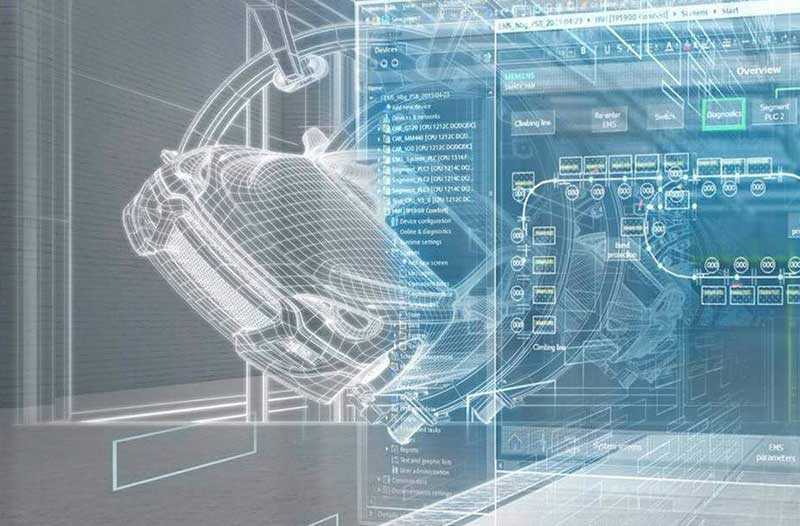
Trend 24: Organisaties maken steeds meer gebruik van technologie om het milieu te beschermen
De huidige inspanningen om de opwarming van de aarde terug te dringen leveren niet de gewenste resultaten. Het is dan ook onwaarschijnlijk dat we het voor elkaar krijgen om de wereldwijde temperatuurstijging onder de 2 graden Celsius te houden, zoals voorgesteld in het Akkoord van Parijs. Dit heeft veel organisaties ertoe aangezet om een beroep te doen op technologie. Het Environmental Defense Fund, een NGO, wil een satelliet lanceren om de hoeveelheid methaan te meten die door de olie- en gasindustrie vrijkomt in de atmosfeer. Methaan is een van de belangrijkste door de mens veroorzaakte broeikasgassen. Deze gegevens worden vervolgens gebruikt om emissiereductiestrategieën te ontwikkelen. Google Maps Street View-auto’s worden binnenkort uitgerust met Aclima’s luchtkwaliteitssensoren die kooldioxide, koolmonoxide en stikstofdioxide in steden meten en in kaart brengen. Bedrijven zoals het in IJsland gevestigde Carbon Recycling International (CRI) hebben zelfs een manier gevonden om koolstofdioxide om te zetten in methanol, dat vervolgens op de Europese brandstofmarkt wordt verkocht. En Volkswagen wil meer dan €40 miljard investeren in elektrificatie en e-mobiliteit. Deze initiatieven schetsen een beeld van een wereldeconomie die zich voor het beschermen van onze planeet steeds meer op milieutechnologie richt; een trend die naar verwachting tot ver na 2019 zal doorzetten.
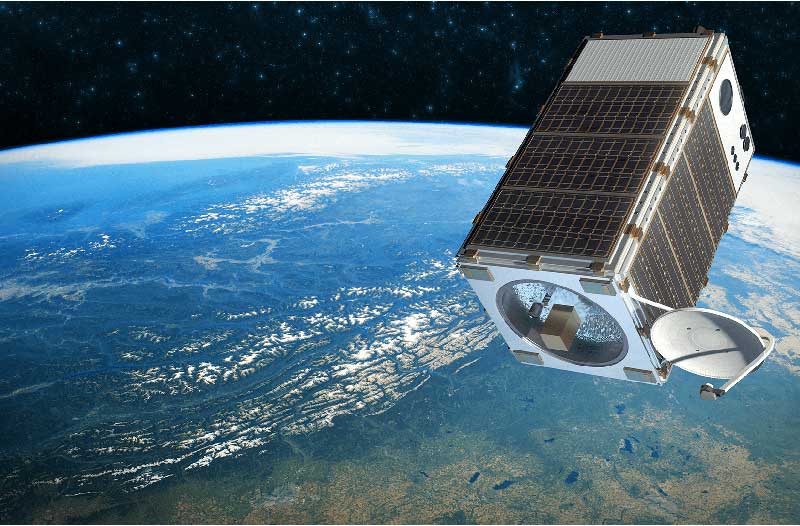
Trend 25: Robots komen we in steeds meer sectoren tegen
2019 zal naar verwachting een geweldig jaar worden voor commerciële robots. Verschillende roboticabedrijven hebben hun productie al opgeschaald en vele andere maken melding van belangrijke onderzoeksdoorbraken. Boston Dynamics, een roboticabedrijf dat eigendom is van het technologiebedrijf SoftBank, is van plan om volgend jaar ongeveer 1.000 vierbenige SpotMini robots te produceren. Deze machines kunnen onder andere ingezet worden in de ouderenzorg, de pakketbezorging, de bouw en de beveiliging. Agility Robotics sleepte $8 miljoen aan investeringen binnen om verder te kunnen met de ontwikkeling van de tweebenige robot Cassie. Deze robot zou onder andere mensen met paraplegie kunnen helpen. En onderzoekers van de University of California, Berkeley en Carnegie Mellon University hebben een tweebenige robot ontwikkeld die zich over ongestructureerd en oneffen terrein kan voortbewegen. Dankzij dit vermogen zijn deze machines uitermate geschikt voor toepassingen in de ruimteverkenning en voor hulpverlening tijdens (natuur)rampen. Onderzoek en innovatie gaan onverstoord door en we verwachten dan ook dat we deze en soortgelijke robots de komende jaren in steeds meer sectoren tegenkomen.
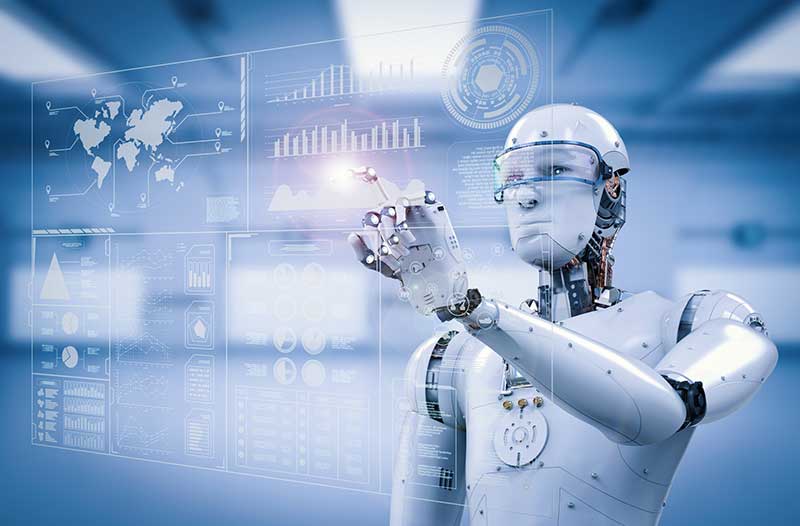
Technologisch ‘waakzaam’ zijn is in de wereld van morgen niet langer optioneel
Het snelle tempo van de technologische ontwikkeling heeft geleid tot een wildgroei van ontwrichtende innovaties die ingrijpende veranderingen teweegbrengen. Om digitale transformatie op gang te brengen en te sturen is het belangrijk om het potentieel achter opkomende technologische trends te observeren, evalueren en erkennen. Technologisch ‘waakzaam’ zijn is in de wereld van vandaag en morgen dan ook niet langer optioneel – het wordt steeds meer een voorwaarde om overheden en bedrijven naar een hoger plan te tillen.
Share via:



